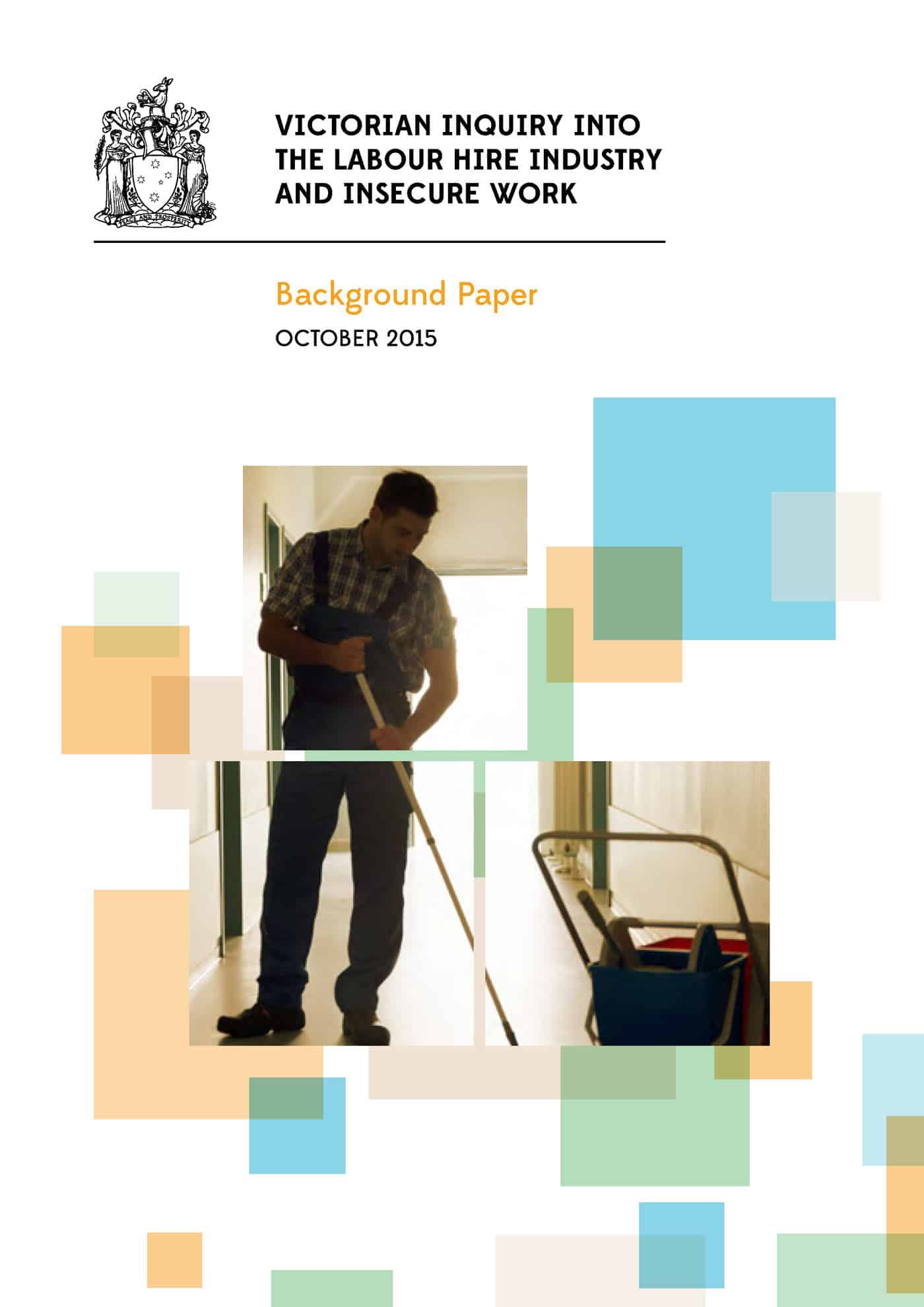The Victorian Government has just released its first discussion paper into labour hire practices and insecure work. As has been discussed when the Inquiry was announced, occupational health and safety (OHS) is part of this inquiry but OHS will only gain the attention it deserves if someone advocates on behalf of worker safety exclusively and thinks about safety in this sector, differently.
Occupational health and safety, particularly in this economic and labour sector, struggles to gain influence because the focus is almost always on levels of income and working conditions. OHS gains attention when something goes wrong and a worker is injured, and that is only IF the worker brings this incident to someone’s attention.
This situation has been a focus of the work of Professor Michael Quinlan who has identified safety risks in precarious work or supply chains for many years. Quinlan authored a Safe Work Australia publication in 2011 which is directly relative to this Victorian inquiry. In that paper Quinlan identified three aspects of supply chains that affect health and safety:
- “the economic and reward pressures that become successively greater towards the bottom of the supply chain
- disorganisation due to the small size of the work setting, use of precarious workers, the fragmented and complex nature of production, and the inability of workers to organise to protect themselves; and
- regulatory failure due to jurisdictional gaps (especially when international supply chains are involved).” (page 1)
If one of the aims of OHS is to eliminate the hazard at the source, OHS professionals must look to these contributory factors of workplace harm and investigate potential controls. Producing a submission to the Victorian Inquiry is the most obvious control measure but this requires professionals to pool their creativity in ways that they may not have applied in the past.
It is common to investigate an incident in a well-resourced organisation or at least one with some structure in order to identify the potential root causes. But how would those techniques apply in the insecure work sector where employment relationships are less formal, the injured party and their colleagues may not speak English or may even deny that an injury was work-related?
That Quinlan, and others, have been able to accumulate any OHS information in these sectors is remarkable.
The Victorian Inquiry’s discussion paper lists the potential OHS risk of working through labour-hire:
“Barriers to entry into the labour hire sector are low, meaning opportunistic operators can easily enter and work in the industry. Some labour hire suppliers are driven by price considerations, to the detriment of compliance with workplace laws. There are some recent serious examples of unscrupulous agencies or employers exploiting vulnerable workers and breaching workplace, health and safety, tax and migration laws on a systematic basis.” (page 9)
The practice of sacrificing worker safety for profits seems to continue in Australia and illustrates the importance of being able to broaden the justification of worker safety beyond the moral and the legislative into the economic. This combination of knowledge resources is what needs to be drawn upon in submissions to the Victorian Inquiry, and probably some of the national inquiries into worker and migrant exploitation flagged by the Federal Government.
On 15 October 2015, Australia’s Minister for Employment Senator Michaelia Cash announced the establishment of the Ministerial Working Group Protecting Vulnerable Visa Holders. There is considerable overlap between this working group and the industry sector being investigated by the Victorian Inquiry.
Supply Chain = Supply Network
The Victorian Inquiry discussion paper devotes at least a page to discussing the safety risks presented by the supply chain structure and operation. However, it is clear that “supply chain” is a misnomer. The supply chain provides the linear and basic supply and demand structure but from each link of the chain, there is a vast network of influencers, users, benefactors and victims. “Supply chain” is really a supply network.
Acknowledging this network also broadens the discussion well beyond supply and demand into other areas of social research, work and effects. OHS has focussed on achieving a “safe system of work” which has been interpreted traditionally as within the workplace. But what is now being described as the “supply chain” or the “supply network” is really the “safe [social] system of work” that OHS laws have included as legislative obligations in Australia for decades.
The Social Context of the Safe System of Work
Looking at the Victorian Inquiry, the Federal Working Party, Safe Work Australia’s publications and several of the recent Virtual Seminars on supply chains and safety through the concept “safe system of work” shows that this phrase can be a valid equivalent to supply chain analyses. It also provides an origin story and a history through OHS legislation back to Robens and, some say, back to at least 1938.
Australian safety professionals are being urged to think of safety differently. Perhaps it is time to embrace the potential for clarity and unification that “safe system of work” has always offered.
The various Inquiries need a safety advocate who can continue to point out the potential safety and health impacts of what is being proposed, discussed and investigated so as to illustrate the real safety and social impacts of business and supply chain decisions and to reduce the harm to workers.


3 thoughts on “Insecure work inquiries should embrace and expand the safe system of work”